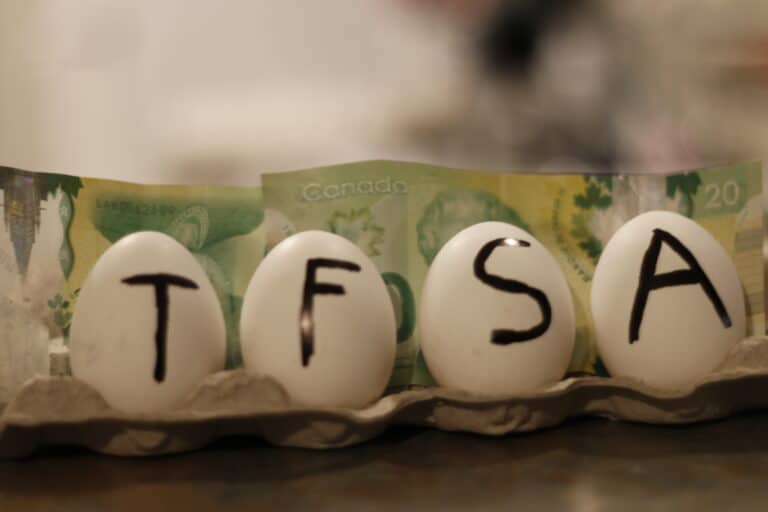How to Use Your TFSA to Earn $4,750 Per Year in Tax-Free Passive Income

Written by Andrew Walker at The Motley Fool Canada
Canadian retirees and other investors seeking steady passive income are using their self-directed Tax-Free Savings Accounts (TFSA) to generate non-taxed earnings.
TFSA 101
Canada created the TFSA in 2009 to give Canadians another tool to set cash aside to achieve financial goals. The TFSA limit in 2024 is $7,000. This brings the cumulative maximum total TFSA space to $95,000 per person for those who were of age in 2009 and have never contributed since its inception. Increases to the TFSA limit occur in increments of $500 and are tied to the rate of inflation. The TFSA limit for 2025 will likely be $7,000, considering the $500 increase that occurred in 2024 and the lower rate of inflation this year.
All interest, capital gains, and dividends earned inside the TFSA on qualifying Canadian investments are tax-free. This means the full amount of the income can go straight into your pocket with concerns that the earnings will bump you into a higher tax bracket or, in the case of seniors, put your Old Age Security (OAS) at risk of a clawback.
Good TFSA investments for income
People who want zero risk can simply buy Guaranteed Investment Certificates (GICs) from Canada Deposit Insurance Corporation (CDIC) member institutions. Rates on GICs soared as high as 6% last fall before markets started to anticipate cuts to interest rates. Now that the Bank of Canada has started reducing interest rates, the rates offered on GICs are falling. That being said, investors can still get rates of 3.5% to 4% on non-cashable GICs today. The downside is that rates will likely continue to decline, so the rate that is available on renewal will probably be lower.
Dividend stocks are another option. These carry capital risks as the share price can fall below the purchase price and dividends sometimes get cut if the company runs into financial trouble. However, investors can get higher yields than those offered on GICs and each increase to the dividend raises the yield on the initial investment.
Dividend stocks that sold off through the second half of 2022 and during much of 2023 have recovered some ground, but investors can still find good yields from stocks trading at reasonable prices.
Bank of Nova Scotia (TSX:BNS), for example, trades for close to $74 at the time of writing compared to $93 at the high point in early 2022.
Investors who buy BNS stock at the current level can get a dividend yield of 5.75%. Falling interest rates should lead to a decrease in provisions for credit losses (PCL) and can also encourage more borrowing by businesses and households in the next few years.
Telus (TSX:T) is a TSX dividend stock that has a great track record of dividend growth and is probably undervalued. Telus trades near $22.50 at the time of writing compared to $34 at one point in 2022. High borrowing costs and price competition have put pressure on profits, but Telus still expects adjusted earnings before interest, taxes, depreciation, and amortization to increase in 2024. Investors who buy Telus at the current level can get a dividend yield of 6.9%.
The bottom line on TFSA passive income
Investors can still put together a diversified portfolio of GICs and dividend stocks to get an average yield of 5%. On a TFSA of $95,000, this would generate $4,750 per year in tax-free passive income.
The post How to Use Your TFSA to Earn $4,750 Per Year in Tax-Free Passive Income appeared first on The Motley Fool Canada.
Should you invest $1,000 in Bank of Nova Scotia right now?
Before you buy stock in Bank of Nova Scotia, consider this:
The Motley Fool Stock Advisor Canada analyst team just identified what they believe are the 10 best stocks for investors to buy now… and Bank of Nova Scotia wasn’t one of them. The 10 stocks that made the cut could potentially produce monster returns in the coming years.
Consider MercadoLibre, which we first recommended on January 8, 2014 ... if you invested $1,000 in the “eBay of Latin America” at the time of our recommendation, you’d have $21,758.28!*
Stock Advisor Canada provides investors with an easy-to-follow blueprint for success, including guidance on building a portfolio, regular updates from analysts, and two new stock picks each month – one from Canada and one from the U.S. The Stock Advisor Canada service has outperformed the return of S&P/TSX Composite Index by 31 percentage points since 2013*.
See the 10 stocks * Returns as of 9/16/24
More reading
The Motley Fool recommends Bank Of Nova Scotia and TELUS. The Motley Fool has a disclosure policy. Fool contributor Andrew Walker owns shares of Telus.
2024

 Yahoo Finance
Yahoo Finance 